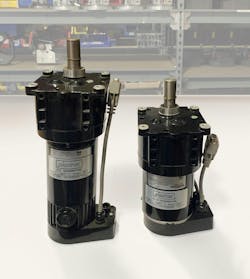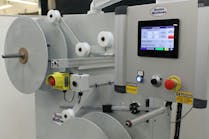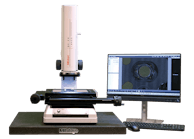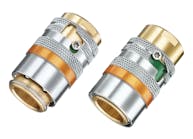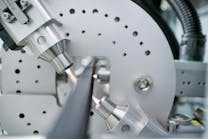Blenders Plastrac’s disc-based gravimetric blender series includes the CS, GF, GS, GA and PET lines. Designed to feed additives from the plant floor, the cart-system CS — also known as ColorStream — blenders can handle one flood-fed resin and up to four metered ingredients. Blending takes place on the plant floor, eliminating the need for catwalks or ladders to access the feed throats of process machinery. This makes changing colors safer, easier and faster. Each CS blender and GF blender can feed up to 250 pounds, up to 2,000 pounds for groups of blenders and multiple machines. Depending upon the model, the GF blenders can handle as many as four metered ingredients, including additives and regrind. Capable of blending one gravity- or flood-fed resin with up to four metered ingredients, Plastrac’s GS press-mounted units accept large dryers, hoppers and central loading receivers, with a throughput of 3,000 pounds per hour. Mounted either directly on the machine throat or on a cart or barrel stand for off-line blending, the GA blenders can feed up to four components and 800 pounds of material per hour. Finally, the PET blenders can handle up to two metered ingredients and one flood-fed resin — including regrind — with throughputs of up to 7,500 pounds per hour.
What’s new? A change from brush-type motors to brushless motors.
Benefits Improved performance, in a more-compact package. With the new motors — which are 30 percent more efficient than their brush-type predecessors — the blenders are more efficient and have up to 20 percent greater feed capacity. This means hroughputs now can range from about 2,400 pounds for groups of CS or GF models to 9,000 pounds for the PET blenders. The new motors have no wear parts, minimizing maintenance needs. They also are faster, and have technologies for monitoring disc-system bearing load. In addition, temperature sensing inside the feeder detects abnormal process conditions.
Plastrac, Newtown Square, Pa., 866-508-6908, www.plastrac.com
Karen Hanna | Senior Staff Reporter
Senior Staff Reporter Karen Hanna covers injection molding, molds and tooling, processors, workforce and other topics, and writes features including In Other Words and Problem Solved for Plastics Machinery & Manufacturing, Plastics Recycling and The Journal of Blow Molding. She has more than 15 years of experience in daily and magazine journalism.
Request More Information

